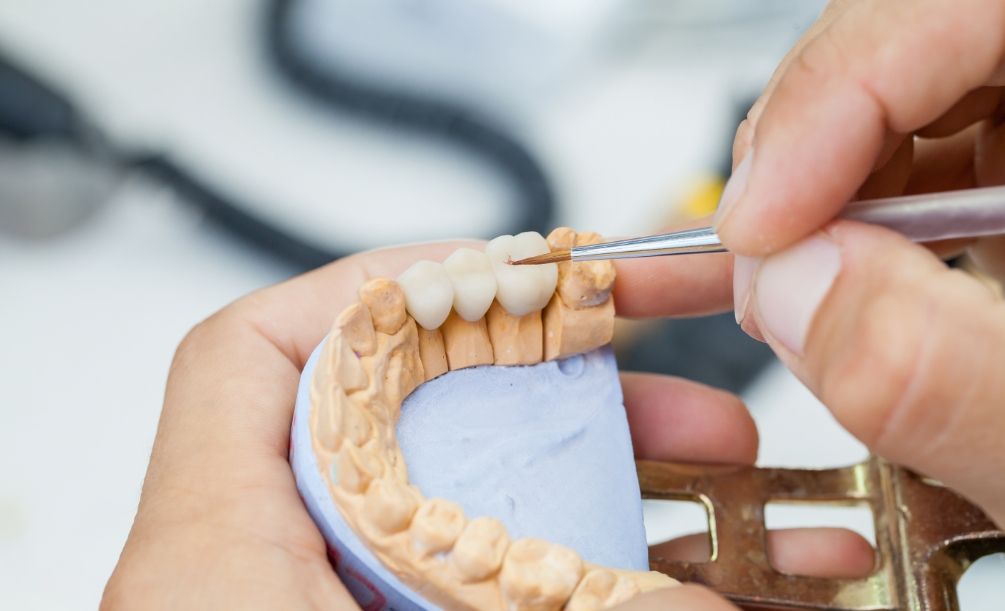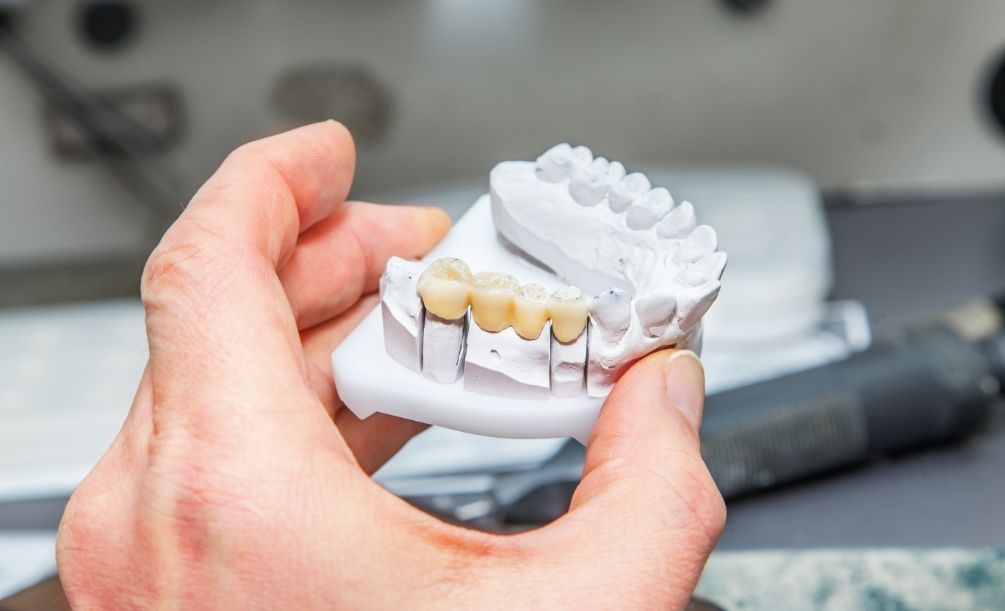DENTAL BRIDGES – ORMOND BEACH, FL
Restore Your Smile with Strong, Lasting Bridges

What Is a Dental Bridge?

- Series of Fused-Together Crowns
- Designed to Attach to Existing Teeth
- Crowns on Either Side Function as Anchors
- Ideal for Patients Missing Single/Multiple Teeth
Types of Dental Bridges

- We Will Help You Choose the Best Option
- Traditional Dental Bridge
- Implant Bridge
The Benefits of Getting a Dental Bridge

- Prevent Teeth Shifting Out of Place
- Less Stress on Jaw Joints
- Eating Food is Easier
- Speak More Clearly & Confidently
Can You Take a Dental Bridge Out?
Dental bridges are designed to remain in your mouth for many years after being placed. You shouldn’t be able to take it out on your own. Only a dental professional can. Some healthcare providers may call partial dentures “removable bridges,” but this is not entirely accurate. While partials are similar to bridges, one of the key differences is the fact that partials can be removed by the patient, while bridges cannot.
Is Getting a Dental Bridge Painful?
Before replacing your teeth to support a bridge, your dentist will numb the teeth that they will be working on. While the procedure itself shouldn’t hurt, you may experience some sensitivity for a few days afterward, but this should be mild and temporary. Over-the-counter pain relievers can help to manage this. Because bridges keep your remaining teeth from shifting out of place, they can help to prevent discomfort later on caused by dental drift.
How Many Teeth Can a Dental Bridge Replace?
Depending on the patient’s needs, a dental bridge can replace anywhere from one to four missing teeth in a row. However, in most cases, bridges are used to replace only one or two teeth. The longer that a bridge extends, the less stable it becomes, especially if the natural teeth supporting the bridge aren’t strong and healthy. It can become risky to have a bridge replace three or more teeth. Dental implant bridges can lower this risk, as implants are strong and secure, just like natural teeth.
Do Dental Bridges Feel Natural?
Within a few days of receiving your permanent restoration, it should start to feel increasingly natural. Bridges are made from durable materials that can stand up to everyday chewing forces just as easily as tooth enamel, so eating with a bridge shouldn’t feel strange. The reason your dentist reshaped your abutment teeth was to ensure that the bridge would fit comfortably within your mouth. Additionally, every bridge is custom-made based on impressions taken of the tooth. Therefore, your bridge shouldn’t feel awkward or noticeable!
What Materials Are Used to Make Dental Bridges?
Dental bridges in Ormond Beach are most often made of porcelain or ceramic. They are completely metal-free, providing a biocompatible solution to replace your missing teeth. Your dentist will craft your bridge to match the color, size, and shape of your natural teeth to blend in. Only a dental professional will know they aren’t your real teeth. Although your bridge won't contain any metals, it will be durable to serve you for many years with the correct care, like brushing and flossing.
How Long Should My Dental Bridge Last?
Many factors affect the lifespan of a dental bridge, like the quality of the materials used and the length of the restoration. On average, a bridge will last for 10 to 15 years before needing to be replaced. You can get the most from your bridge with a commitment to good oral hygiene. Brush your teeth at least twice a day for 2 minutes and floss daily. Limit your consumption of hard or chewy foods to put less wear and tear on your bridge. Ask your dentist for a nightguard if you have a habit of grinding or clenching your teeth. Schedule a cleaning and checkup every 6 months with your dentist in Ormond Beach. They will keep your mouth healthy and check your bridge at each appointment to ensure it is functioning as intended.
Can I Use My Dental Insurance for a Bridge?
Often, dental insurance can be used to lower the amount you pay out-of-pocket. Your insurance may cover your consultation and diagnostic services for a co-pay. After meeting your annual deductible, your insurance may pay 50% to 80% of the expenses for medically necessary treatments, including your dental bridge. We will help you maximize your yearly allowance to complete your smile while staying within your budget. We offer flexible financial solutions for any remaining balance.
Can Dental Bridges Get Cavities?
Dental bridges cannot get cavities, but your natural teeth are still vulnerable to decay, including those underneath your dental crowns. Bacteria can gain access to your abutment teeth through small cracks that form in the dental cement over time. You can safeguard your smile from cavities with good oral hygiene. Limit how often you have sugary foods and drinks to prevent cavities. Don't forget to visit your dentist twice a year for a cleaning and checkup.
